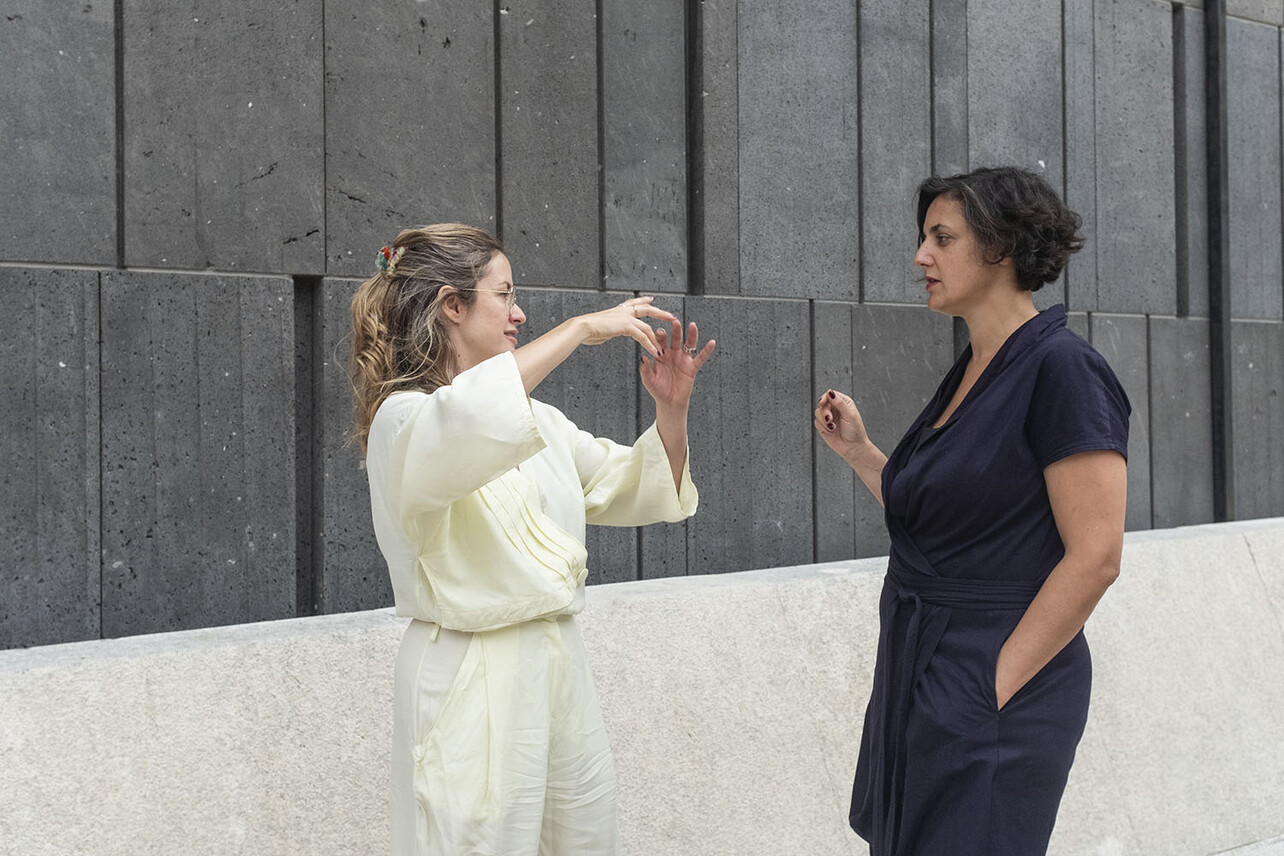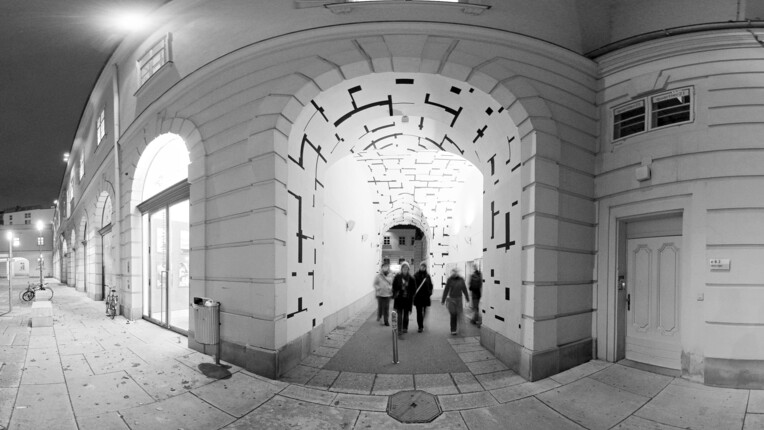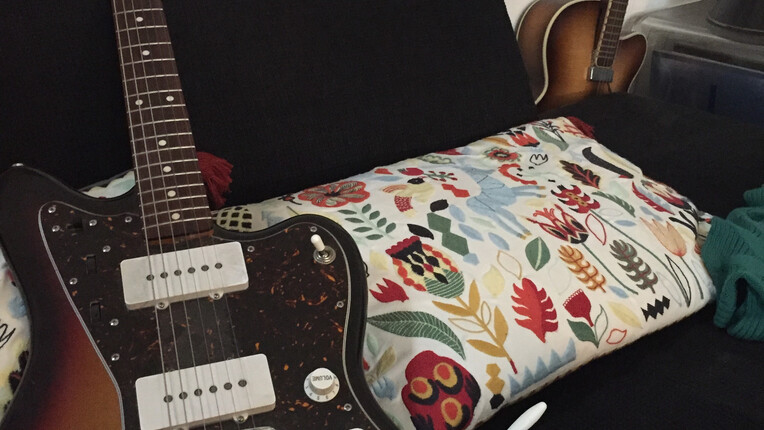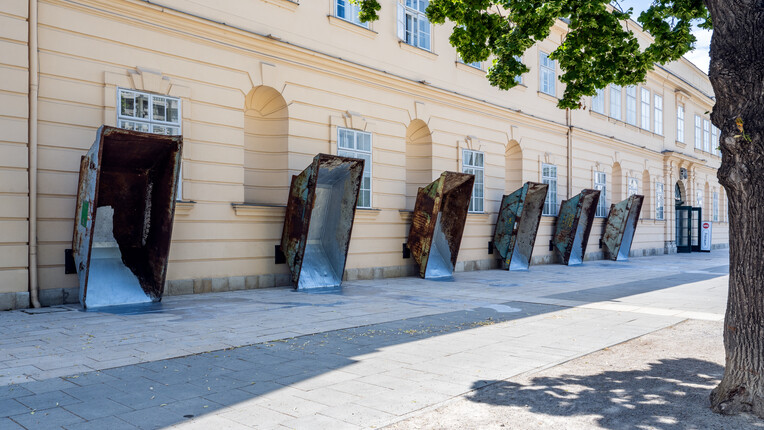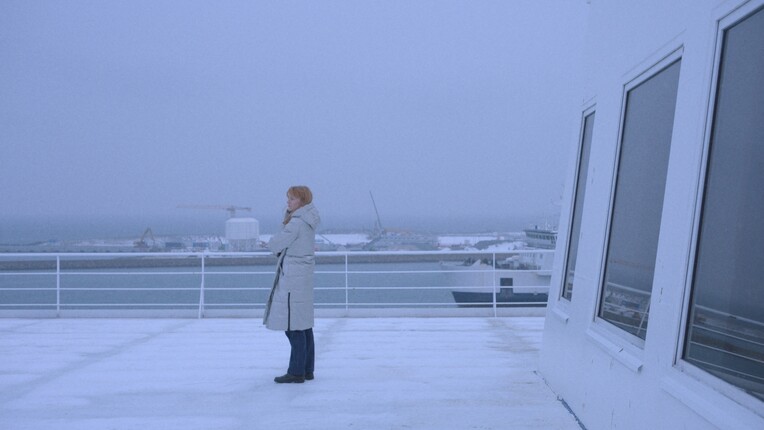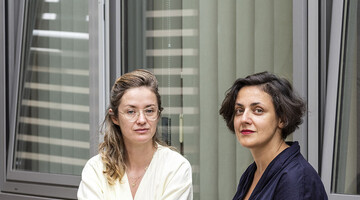
Natalia Domínguez Rangel in conversation with Alena Alexandrova
Natalia Domínguez Rangel opened her installation L I S T E N at the TONSPUR_passage in the MuseumsQuartier Wien and talks about her work with Alena Alexandova.
We have been colleagues and friends for more than ten years. We found that our work and projects have points of strong resonance with each other and we share a lot of common interests: contemporary music, sound art, critical listening, time and duration both in the field of sound art and visual art and theory. We both teach in the Netherlands, Alena at the Gerrit Rietveld Academy in Amsterdam and Natalia at ArtEZ in Arnhem. We are engaged in an ongoing conversation and follow each other’s works in Amsterdam’s cultural scene. At the moment we are at the initial phase of a future project, on which we will work together. We realised that alongside our conceptual and artistic interests there is a lot of potential in drawing on our professional networks to develop a work together.
Natalia invited Alena to introduce and write on the new sound work for the TONSPUR_passage.
L I S T E N deals with ideas, the type of material and approach which are very resonant with the conceptual questions central to a book Alena is writing at the moment: Anarchic Infrastructures: Re-Casting the Archive, Displacing Chronologies. It discusses the way a number artists create micro-histories of media and modes of looking by animating a range of archive material. Among them is Alexandra Navratil, for whose video installations Natalia has created soundtracks.
Alena: I was thrilled to think along and set in motion these concepts in what for me is a new field of sound art and sound research. Can you talk about the professional itinerary that led you to the point of creating L I S T E N.
Natalia: I trained as composer and I have a long list of composition work for ensembles. But I also have an extensive experience with creating sound for installations, with electronics, synthesis and field recording. What interests me at the moment are the latest technologies which come with a promise of techno-utopias. I am especially interested in how sound affects and resonates with an audience physiologically and psychologically, and how space and specifically acoustic space make us think of time, duration, acoustics and architecture. Central to L I S T E N was the question how we experience augmentation of the ambient acoustics of public spaces and how sound defines the virtual boundaries of the space. For example, if I play a field recording of the passage through the sound system of the passage the effect is an augmented layering of the ambient and bleeding of present with past moments in time.
How did you become interested in making sound art?
At the moment I am combining composing pieces for ensembles with making sound-art works. Sound opens a different space for conceptual thought and experimentation. Also, I found it liberating from the conditioned structure of composing. While acoustic instruments have limitations and a relatively fixed vocabulary, with electronics you don’t have to justify everything or deal with such limitations. In composing there is a clear structure and language and in the sound world there is a more room for conceptual articulation, and for me to go deeper in my interests: architecture, transformation of space and its acoustic articulation. Gradually I started working for different artists and making sound for video and film installations. Later, I experimented with my own installations based on electronics, synthesis, field recordings and how I project sound into space.
What do you want to make audible with the new work?
I am very interested in how sound articulates space and what it means for the audience. In 2018 I created Box of Pain for W139, Amsterdam. I wanted to explore how laser sound, as ultrasonic frequencies, transforms the dimension of space. In combination with strobe lights and darkness, it can create a very intense experience. I used parametric speakers, which define space differently. As a result you can experience and sound hallucinations, feel out of your head and lose your sense of control. With L I S T E N I wanted to explore this idea further in the direction of creating a situation in which one perceives the space in different way and becomes much more aware of hearing and starts to listen critically.
How did you arrive at making L I S T E N?
I met Georg Weckwerth, the artistic director of TONSPUR, while I was in a KulturKontakt Austria residency in 2017. We began a conversation, and couple of years later he invited me to the Q21 residency in July 2019. I already had ideas about creating an installation for this space. It is a well-known passage, and a fixed format of an eight-channel sound system and a series of seven light boxes for posters, so I knew that I wanted to make a site-specific work developed for the space.
What was the first idea for the piece?
I wanted to deepen my exploration of critical listening. I was interested in what it means to listen to the sound of this specific structure, and I wanted to work with materiality of the space and its type of acoustic articulation. The natural state of the area was different before the construction of the building and historically speaking this generates a different position of listening. So I wanted to explore the history of the area, and I though that it would be great to know more about the transformation of its ambient acoustics. I went to the archive of the Österreichische Mediathek. I wanted to start from somewhere, to revisit history, especially sound archives in one or another way related to the area. I was not sure what I was going to find, and in fact, there was not so much. I found some fragments of the sounds around the area of the MuseumsQuartier, mainly in journalistic reports. But the material was not so much, because previously, in the eighties and the nineties, television and recordings were done differently. They did not focus on recording ambient sound. I had difficulty finding accurate recordings. I listened to different types of programme and finally I could cut snippets of seconds of sounds. This was a moment I realised such material needs to be collected and archived, and mapped differently. Now I want to do it in many more places and in a more precise way. The rest of the material I used for L I S T E N is determined by coincidences. For example, I use a fragment from a piano quartet by Gustav Mahler, which had its premiere in July 1876.
Can you say more about how you composed the constellation of fragments to make the final piece?
The score was like a choreography activating and highlighting each speaker. I subdivided them in two groups. The ones in the south and the north end were I assigned with what I call “my inner voices” in their male and female version. They announce the time of the day in which I made a field recording, or the year associated with a sound fragment I used. The voices also set the tempo of the piece. The other six speakers carry the ambience of what was happening in that coordinate at that time. They are activated one by one; especially when the time is announced all speakers work in unison, thus unifying the passage.
Natalia Domínguez Rangel (Bogotá, CO) has lived and worked in Amsterdam since 2003. Graduated from her Master in Music Composition at the Conservatorium van Amsterdam (2010). Winner of the “Tera de Marez Oyensprijs” music composition prize (Amsterdam 2009). Ruins in Reverse, a collaboration with the artist duo Broersen & Lukács, was acquired by the Stedelijk Museum (Amsterdam 2015). Domínguez Rangel’s music and sound work offers a varied mix of contemporary classical composition alongside electronic synthesis, field recordings, ambisonics, installations and performance. The versatility of her composition is exhibited by recent works across formats ranging from ensemble pieces to sound installations. She teaches sound at the Interactive Design Department at ArtEZ University of the Arts in Arnhem.
Alena Alexandrova is a cultural theorist and an independent curator based in Amsterdam. She teaches at the Fine Arts and the Photography Department of the Gerrit Rietveld Academy. Currently she is writing a book called Anarchic Infrastructures: Re-Casting the Archive, Displacing Chronologies and regularly contributes to art publications and catalogues. Alexandrova curated a sequence of exhibitions exploring the conceptual figure of “anarcheology” in the practices of present-day artists. She has a doctoral degree from the University of Amsterdam.
